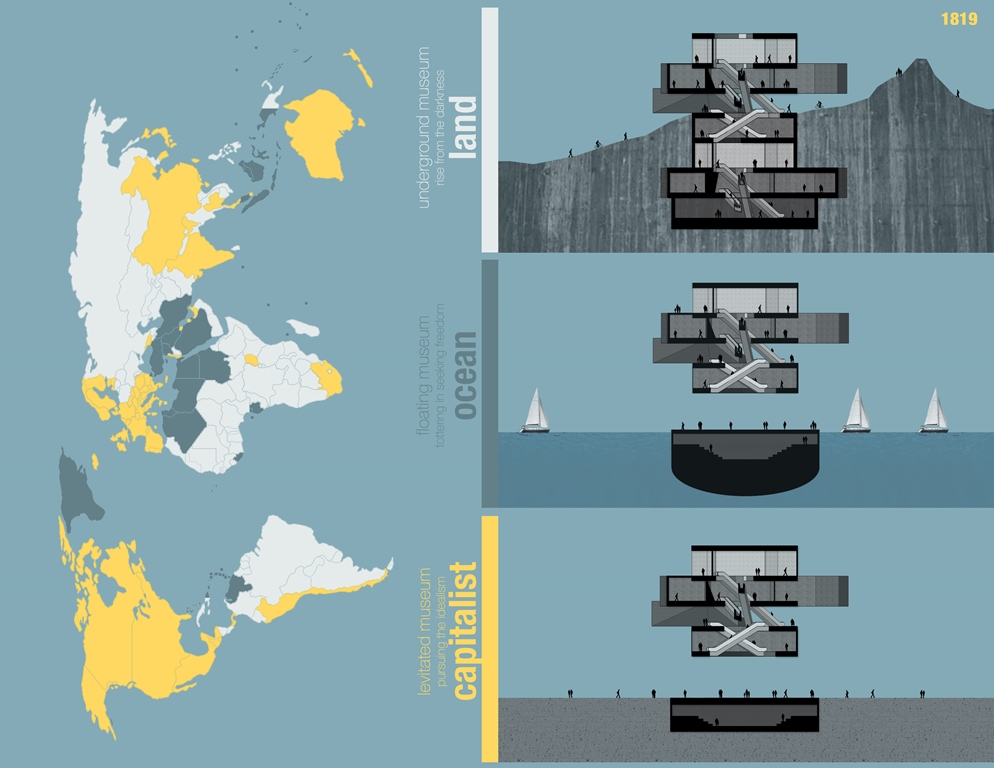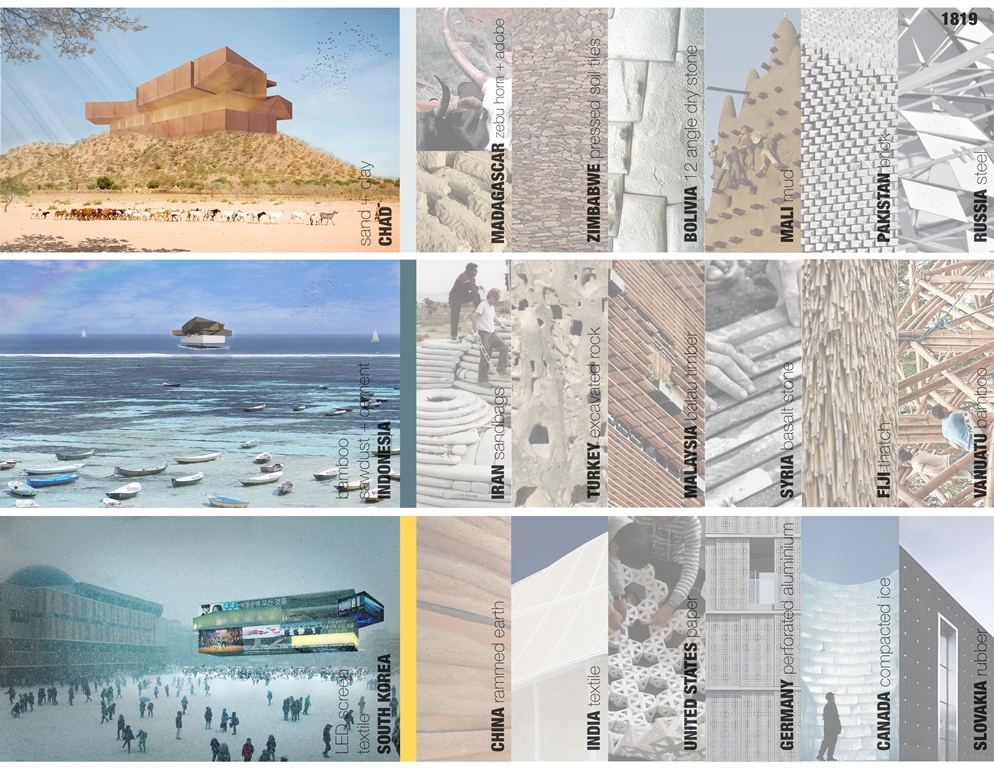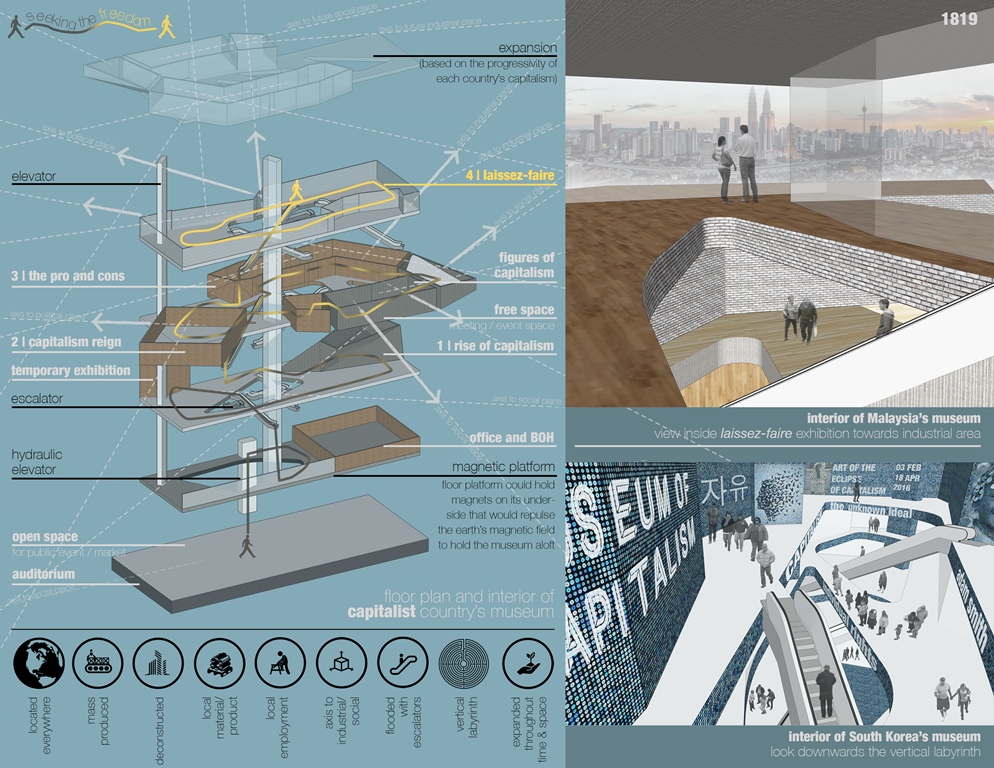Museum of Capitalism | Endless Loop of Seeking Freedom
Architect
- Videshiiya
Location
Contextually Ubiquitous
Area
- 6.989 Sqm
Status
Proposal | Top 20 Competition Entry
Year
2016
Designers
- Niniek Febriany
- Stephanus Theodorus Suhendra
- Dika Ardi Irawan
Capitalism is a social system based on the individual rights. Politically, it is the system of freedom. Economically, when such freedom is applied to the sphere of production its result is the free-market.
The flood of misinformation, misrepresentation, distortion, and outright falsehood about capitalism is such that people of today have no idea of its actual nature. Some countries are even applied capitalism differently. By the silence, capitalism is being destroyed without any public knowledge of its principle and moral meaning.
Regarding the facts, it is obvious— the museum should be “mass-produced” and located everywhere; whether in a proclaimed capitalist country, an emerging country, or a socialist.
–
The museum designed on a deconstructed manner— as the language of a “willingness to face naked facts” of the capitalism. Deconstructivism took a confrontational stance to architectural history, wanting to “disassemble” architecture. It is opposed the order and form is often deformed. The design deconstructs the archetype of the museum and renders its spaces and structure with conflict and difference; resulting the dissected forms and content, and viewed from different perspectives simultaneously.
To communicate the history and principle, the most important exhibit is the landscape of the site itself, where the vivid memories of mankind are embedded. The question that arises is— how to create a museum that is integrated into its surroundings and also capable of drawing out the characteristics of the place, in other words, the creation of site-specific architecture.
To exhibit each country potential, we are clustering the non-capitalist countries into ocean (rich of ocean and coastal resources) and land (rich of land and labor resources), while the proclaimed capitalist countries are in one group.
The natural relation of each country and the museum expressed through vernacular. This vernacularization of each museum likewise rescues it from pure commodity by suggesting its organic, naturally evolving, and “naked” relationship to the user.
Each museum will use local materials— to reintroduce the varieties of domestic product and enhance its genius loci. The construction will benefit the local employment and equality of wealth distribution, and by any means, promote their construction knowledge. In addition, to connect the museum and its city context, the exhibition space orientated to the regionally acclaimed industrial, political, and social places.
The interior is crammed with escalators, however several of them exist to create confusion and act as a vertical labyrinth. The labyrinth reflects the existence of a social, economic, and political interpretation of capitalism— which gave rise to the idea that freedom and the possibility of making mistakes, are intimately connected to the very essence of the human condition.
This characteristic also generates in the visitors— a strong desire to “escape” vertically toward the upper floor where the laissez-faire exhibition located.
In addition, the museum tends to leave the constructions unachieved, in a way, and to continue them throughout time and space. Thus, both space and time become two fundamental variables affecting human beings caught in an endless loop of seeking freedom.












